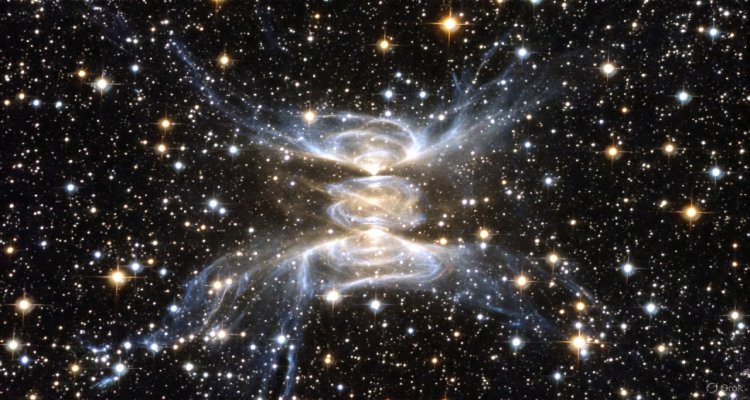Gravity Games: What Einstein Didn’t Know
From black hole puzzles to quantum enigmas, discover what modern physics is revealing about gravity—beyond Einstein’s brilliant theory.
Introduction: When Gravity Plays Tricks
In 1915, Albert Einstein revolutionized science with his General Theory of Relativity, redefining gravity not as a force, but as the warping of spacetime. For over a century, this theory has passed every test—from the orbit of Mercury to the bending of starlight. But in recent years, cracks have appeared at the edge of the cosmic stage. Black holes, dark matter, quantum mechanics—they all point to a lingering truth: Einstein didn’t know everything about gravity. And now, the universe is starting to whisper its deeper secrets.
Context & Background: Einstein’s Gravitational Legacy
Einstein’s theory replaced Newton’s classical model, in which gravity was an invisible force acting at a distance. Instead, he proposed that massive objects bend the fabric of spacetime, and this curvature directs the motion of objects—much like a bowling ball sinking into a trampoline.
Relativity not only explained previously unsolved anomalies, it also predicted new phenomena, such as gravitational waves and the slowing of time near massive objects—both confirmed long after Einstein’s death.
But the story doesn’t end there. In the microscopic world, Einstein’s model doesn’t work. Gravity refuses to be quantized the way light, electromagnetism, or the nuclear forces are. That inconsistency has led modern physicists on a new chase—a search for what Einstein didn’t know.
Main Developments: Black Holes, Quantum Tensions & Cosmic Clues
1. The Black Hole Information Paradox
Stephen Hawking’s work in the 1970s showed that black holes emit radiation—now called Hawking radiation—which could eventually lead them to evaporate. But this created a puzzle: if black holes disappear, what happens to the information they consumed?
Einstein’s framework doesn’t answer this. In fact, it clashes with the fundamental laws of quantum mechanics, which state that information can’t be destroyed. This paradox has become one of the greatest unresolved mysteries in physics—and a major clue that our understanding of gravity is incomplete.
2. Gravitational Waves and New Detectors
In 2015, the LIGO observatory detected gravitational waves for the first time—a century after Einstein predicted them. These ripples in spacetime, caused by colossal collisions of black holes or neutron stars, opened a new window to observe the universe.
But the waves themselves may carry subtle signatures of quantum effects—an area Einstein never considered. Researchers at LIGO and its European counterpart, Virgo, are now fine-tuning their detectors to catch these subtle hints.
3. Dark Matter and Dark Energy
Nearly 95% of the universe is invisible to us. Dark matter, which interacts gravitationally but not electromagnetically, defies direct detection. Dark energy, even more mysterious, is accelerating the expansion of the universe.
Einstein introduced the cosmological constant—then called it his “greatest blunder.” Yet modern observations show it may have been right all along. Still, neither relativity nor quantum theory fully explains what dark energy is or why it behaves the way it does.
Expert Insight: “Einstein Gave Us the Rules. Now We’re Seeing the Exceptions.”
Dr. Priya Natarajan, theoretical astrophysicist at Yale University, notes:
“Einstein’s theory is one of the greatest intellectual achievements in history. But nature is now pushing us beyond it. From galactic rotation curves to entangled black holes, we’re realizing gravity might be even stranger than we imagined.”
Others, like Dr. Carlo Rovelli, a pioneer in quantum gravity, are exploring alternatives such as loop quantum gravity, which reimagines spacetime itself as granular and dynamic at the tiniest scales.
Public interest, too, is rising. The popularity of books like The Order of Time and films like Interstellar shows how deeply these mysteries resonate beyond the lab. Gravity is no longer just about apples falling from trees—it’s about decoding the cosmos.
Implications: The New Physics of the 21st Century
We may be on the verge of a gravitational revolution. Theories like string theory, emergent gravity, and quantum loop models are all vying to become the next big thing. Experiments like the Event Horizon Telescope, which captured the first image of a black hole in 2019, and upcoming space missions like LISA (Laser Interferometer Space Antenna) are expected to yield more clues.
If these efforts succeed, we could eventually develop a Theory of Everything—a unified model that merges gravity with the quantum world. This would reshape physics, technology, and perhaps even our understanding of consciousness, time, and existence itself.
But as Nobel laureate Kip Thorne once said:
“Nature is subtle and deep. We’re still just scratching the surface.”
Conclusion: Beyond the Curved Horizon
Einstein opened the door to a new view of the universe, but modern science is now peering through that door and seeing farther. Gravity is more than a pull; it’s a puzzle. One that binds galaxies, bends time, and refuses to be fully understood. As we delve deeper into this “Gravity Game,” we honor Einstein—not by stopping at his conclusions, but by continuing the quest he began.
Disclaimer: This article is intended for informational and educational purposes only. It does not serve as professional scientific advice.











